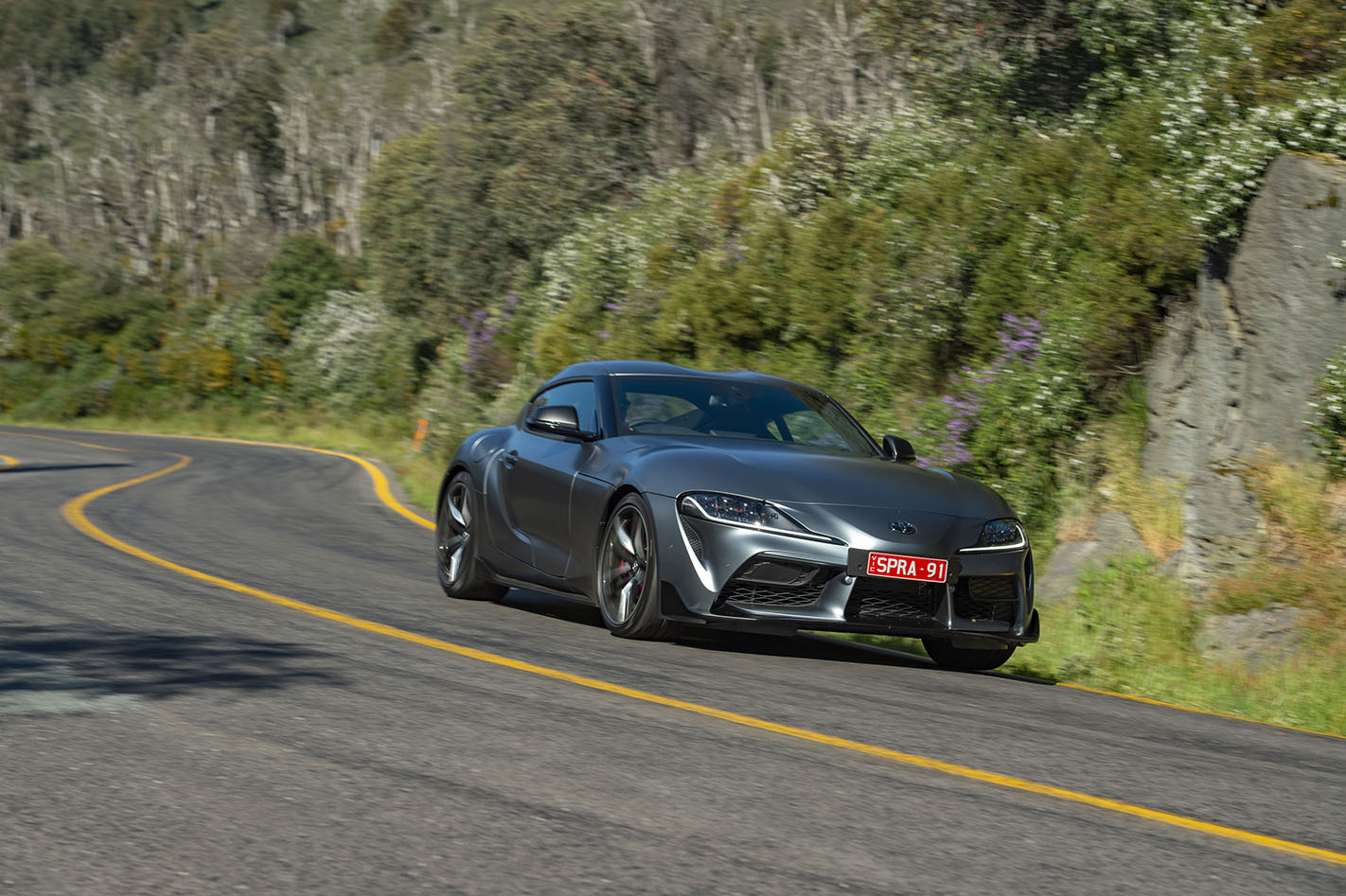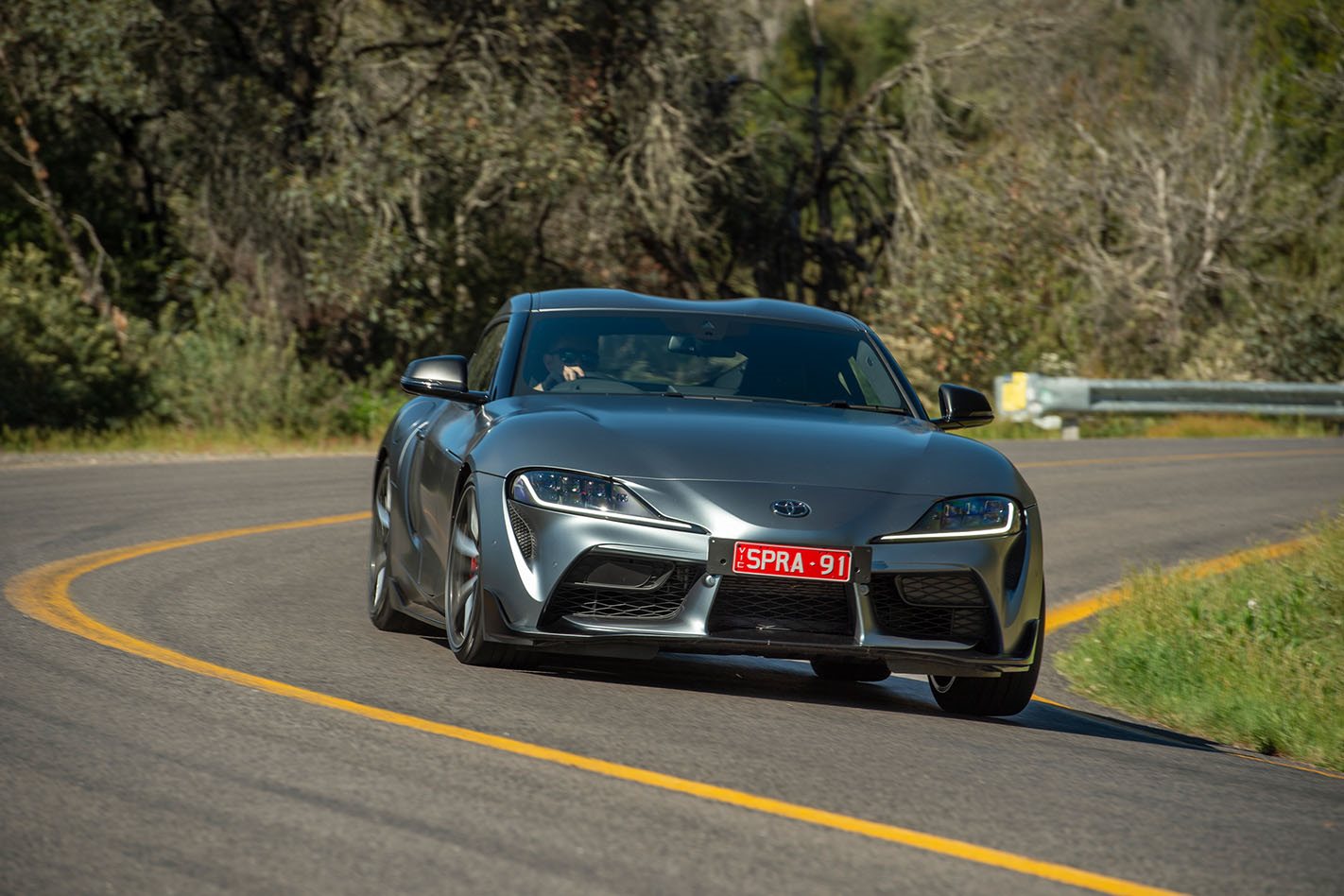Apologies in advance for being anti-climactic, but the Toyota Supra is a damn good sports car. If you are in the market for a driver’s car that gets your adrenal glands pumping, can be driven regularly, and stands out from the crowd, the reborn MkV Supra is one of the best options available today.
At PCOTY 2019 the Toyota Supra finished a worthy third, beating the likes of the HSV Camaro ZL1, Renault Megane RS Trophy R, and Lotus Exige Sport 410. Stiff competition.
It is interesting, then, that Toyota has felt the need to update its flagship sports car just over a year after it was launched locally. What’s changed, then?
Thanks to some fiddling from BMW, the German-sourced 3.0-litre turbocharged straight-six-cylinder engine now makes an extra 35kW (for a total of 285kW), and there have been tweaks to the chassis to add rigidity.
Thing is, the Supra didn’t really need any extra grunt or stiffness. It was already plenty fast in the real world, and Toyota had tuned in a sweet ‘Goldilocks’ suspension tune that was not too stiff, not too soft. So, has Toyota broken the sacred ethos of “if it ain’t broke don’t fix it”? Spoiler alert: no.
It’s all too easy nowadays to give a sports car a little too much power, which you can’t tap into on some of Australia’s best back roads without turning your licence into a critically endangered species. Thankfully, the changes made to the Supra’s engine have only served to make it more accessible, more of the time.
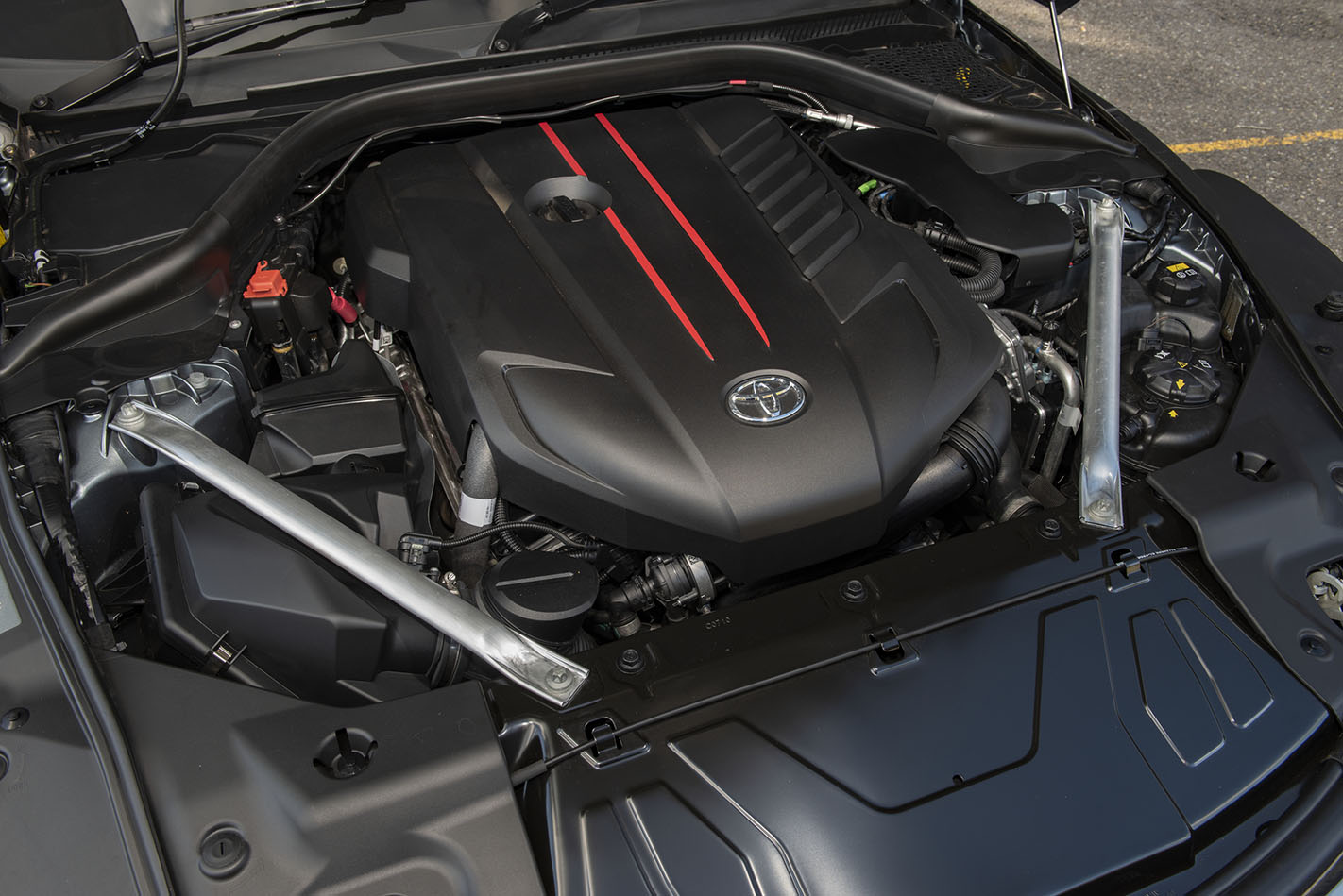
Peak power is not simply increased at the top of the rev range, with the extra kilowatts on offer earlier and across a wider spread of revs, shunting the Supra toward the horizon between 5800-6500rpm. Torque remains capped at 500Nm, but is now spread between 1800-5000rpm (previously 1600-4500rpm).
Having peak torque on tap for more than 3000rpm means the Supra always feels muscular, without the driver needing to search for the right ratio in the eight-speed automatic gearbox to get meaningful acceleration.
Toyota claims the new powertrain will drop the 0-100km/h sprint to 4.1 seconds. Our short time with the flagship GTS variant means we haven’t had the opportunity to verify the claim with independent performance testing.
Our best time with the 250kW version was a stout 4.44sec from 0-100km/h, and the patented butt dyno tells us the extra 35kW of grunt and wider powerband will shave a tenth or two from that.
Kudos to Toyota for making the more powerful powerplant available on both the base GT and more expensive GTS variants of the Supra, with prices rising $2000 across the board as a result. The engine isn’t the only area that has been fettled for this update, with new strut braces fitted in the engine bay to help improve rigidity.
For the anoraks, the only external way to differentiate this new more powerful version from early MkV adopters is the addition of a Supra logo on the front brake calipers on GTS badged versions. GT variants, with their unpainted calipers, remain visually indistinguishable unless you pop the bonnet and see the additional strut braces.
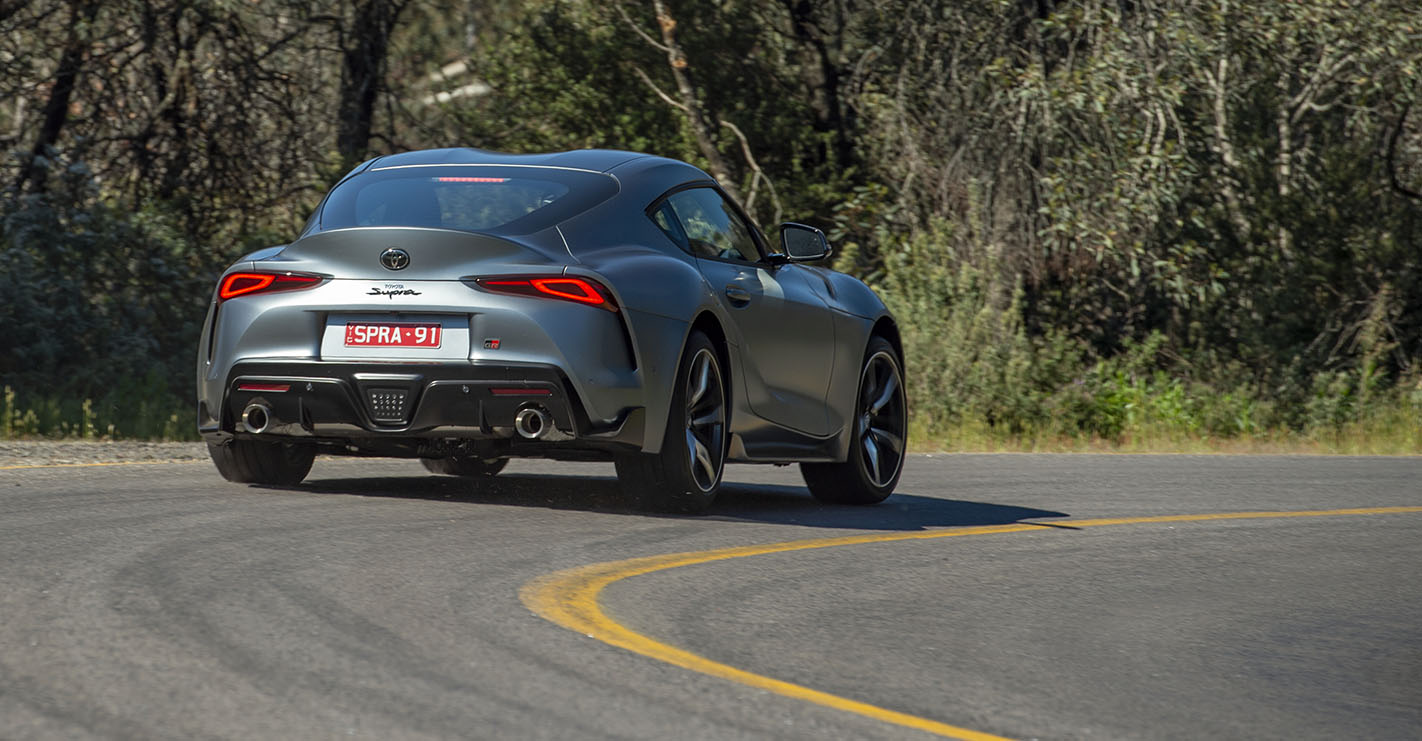
It’s not all about power with the Supra though, as the mid-corner speed you can achieve in the MkV is staggering, helped in no small part by the Michelin Pilot Super Sport rubber (255/35/R19 up front and 275/35/R19 at the rear).
Chassis balance is beautifully judged, with keen turn-in, and an eagerness throughout the middle part of the corner that inspires you to start employing your right foot early. Square up the exit, press the throttle against the firewall, and the Supra places its newfound power to the ground with aplomb.
Take this as your one warning though: don’t get aggressive with the Supra. It performs better with a smooth hand, and is at its most rewarding (and fast) when flowed progressively from one bend to another. Snap oversteer awaits those with jerky inputs.
The brakes perform well, with strong pedal feel that doesn’t step over the line of being artificially overservoed. There is enough travel in the pedal that you aren’t stressed against the belts on the mildest of applications, but strong applications still shed speed rapidly.
The wheel is nicely sized at 373mm, has a well-judged rim size, and is thankfully fitted with a judicious selection of buttons – mainly for controlling the cruise function and media.
Now for the downsides, which I’ll preface by saying don’t come anywhere close to spoiling the Supra’s giggle-inducing positives. Firstly, the ZF torque-converter automatic is crisp and smooth on the way up the ratios, but can be clunky coming back down, particularly at slow speeds around town.
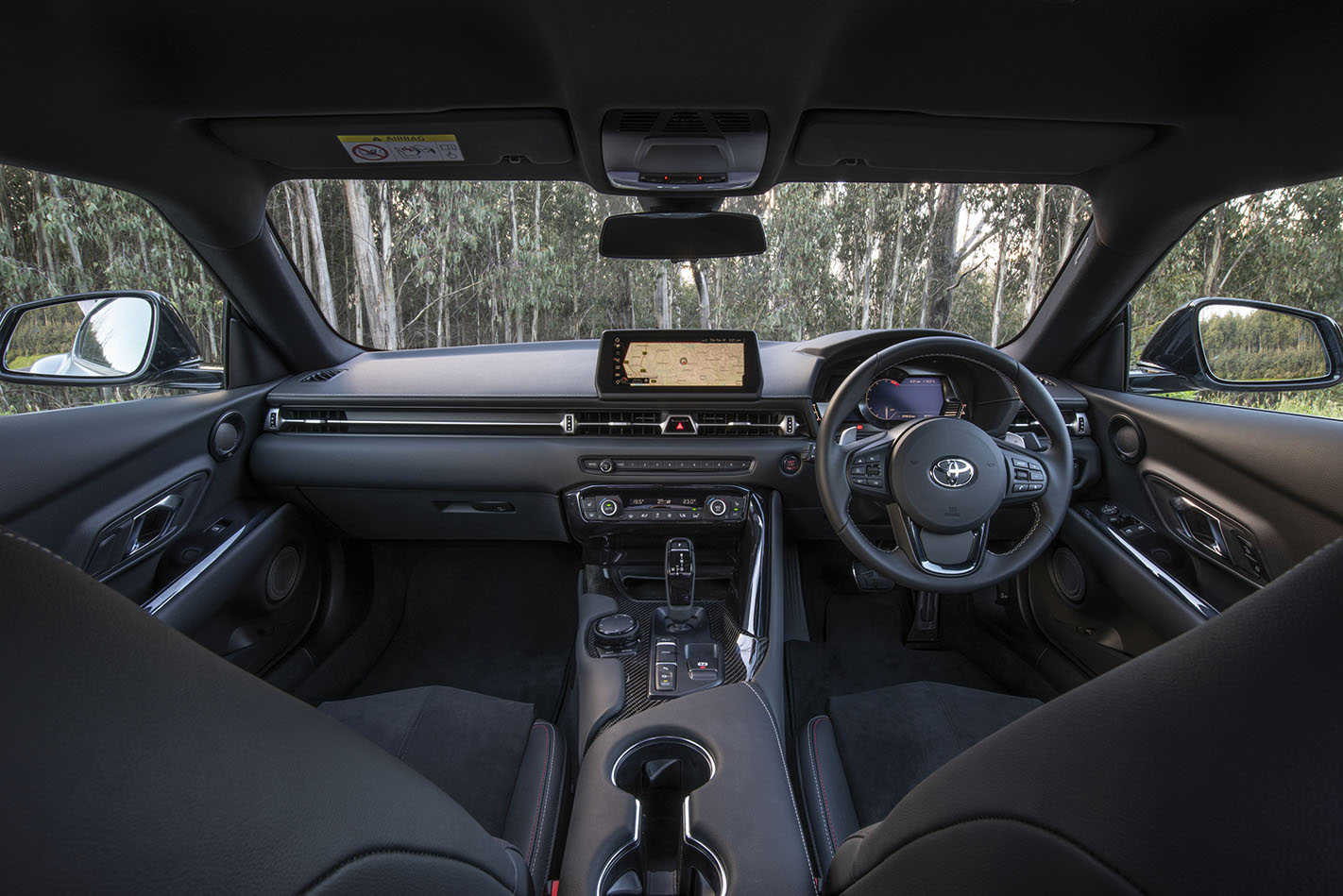
A grand tourer the Supra decidedly is not. With less than 1000km on the odometer, our test car had already developed an incessant and incredibly annoying rattle in the dash. That brings our tally of Supra press cars with rattles to three (out of three), each developing a problem in a different area of the cabin. Toyota needs to send someone to Graz with a stern finger and a new set of ratchets.
Then there is road noise. On the highway, tyre noise is a pervasive problem. You need to have the JBL speakers cranked to drown out the drone. Long stints on the highway in the Supra can become tiring.
However, the biggest sticking point with the Supra remains its pricing and model structure. I struggle to see a reasonable justification for the extra premium that the GTS demands over the base model.
If you opt for the GTS you gain 19-inch wheels (up from 18 inches), wrapped in the same Michelin Pilot Super Sport tyres as the GT, larger rear brakes with red calipers, metal pedals, a head-up display, JBL sound system, and the ability to option Alcantara interior trim and matte grey pain at $2500 a pop (both of which were fitted to our test car).
The value just isn’t there.
Our test car was priced at $102,126 before on-roads, a full $15,000 more than a base GT, for no real performance gain. Yes, the GTS gets larger rear brakes, but you won’t notice that in the real world, and track day enthusiasts are going to get more benefit from more aggressive pads. The extra tinsel doesn’t necessarily improve day-to-day liveability either, with the JBL speakers not adding a significant level of extra fidelity or clarity, and the small convenience of a head-up display just isn’t worth the extra outlay. Ultimately, unless you are desperate for the bigger rims or access to the paint and trim options, save yourself the money and pass on the GTS.
Regardless of which variant you opt for, if you are willing to put up with its niggles, the Toyota Supra will reward you with one of the most enjoyable driving experiences you’ll find in any new car on sale today.
Long live the legend.
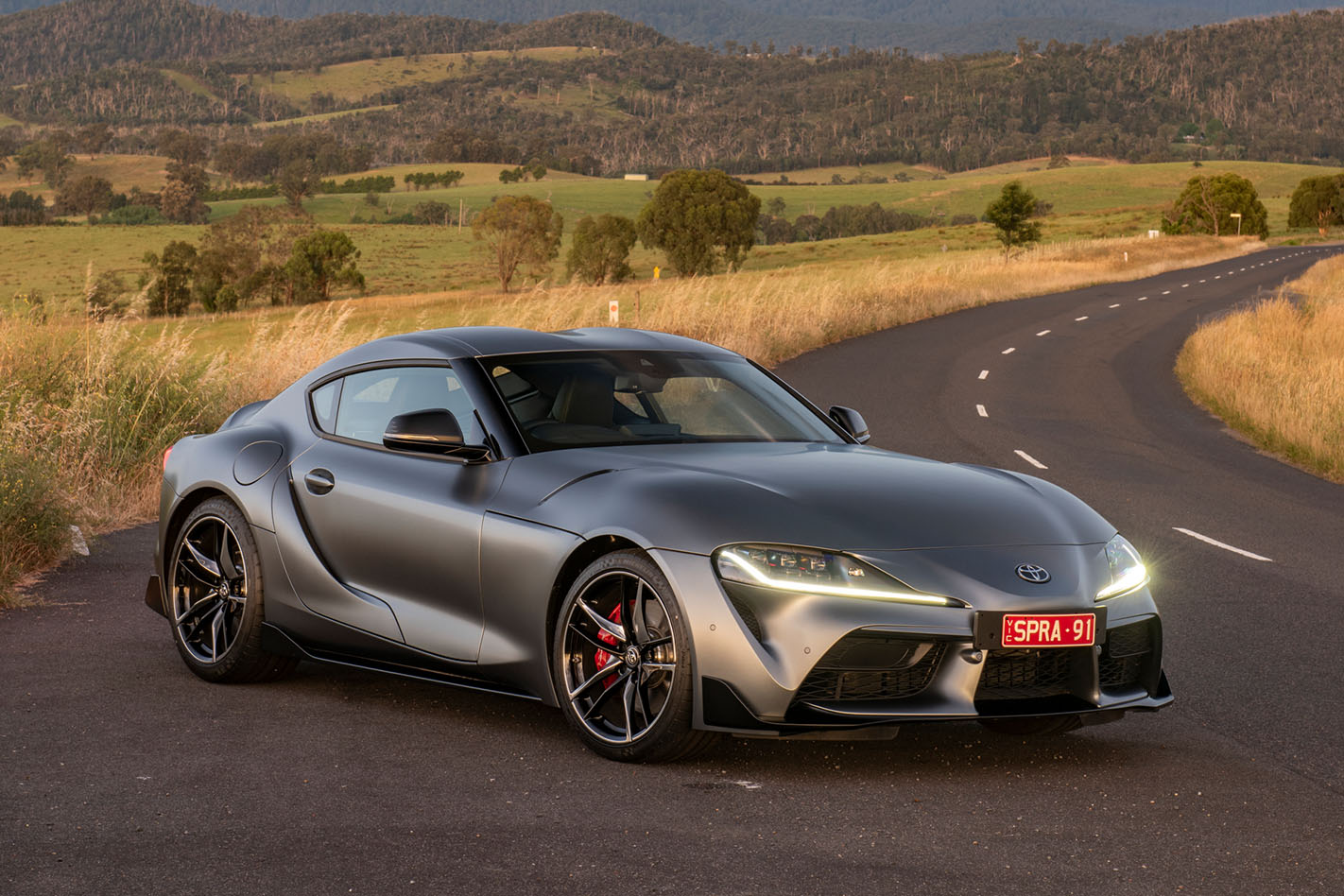
TOYOTA SUPRA GTS SPECS
Engine: 2998cc inline-6, DOHC, 24v, turbo
Power 285kW @ 5800-6500rpm
Torque 500Nm @ 1800-5000rpm
0-100km/h: 4.1sec (claimed)
Weight: 1495kg
Price: $97,126
Star rating: 4.5/5
Like: Accessible performance, prodigious chassis, head-turning looks
Dislike: Clunky downshifts, tiresome road noise, persistent rattles squeaks
